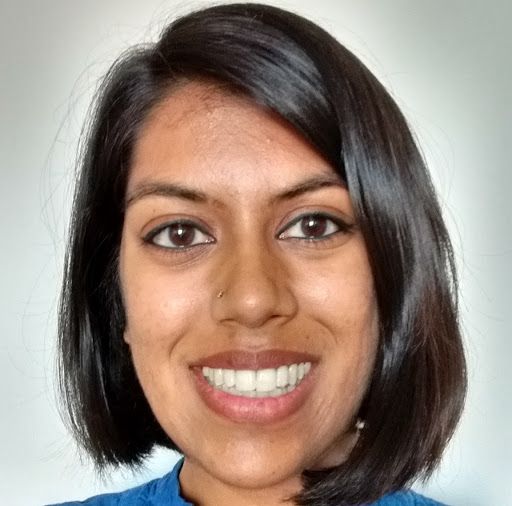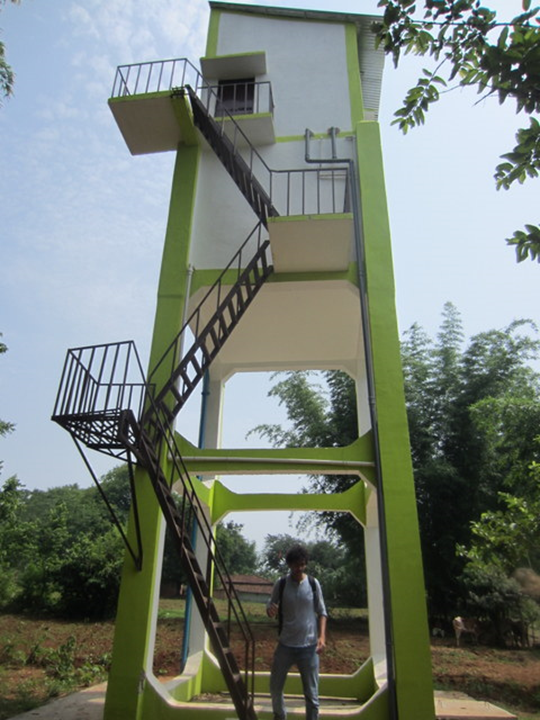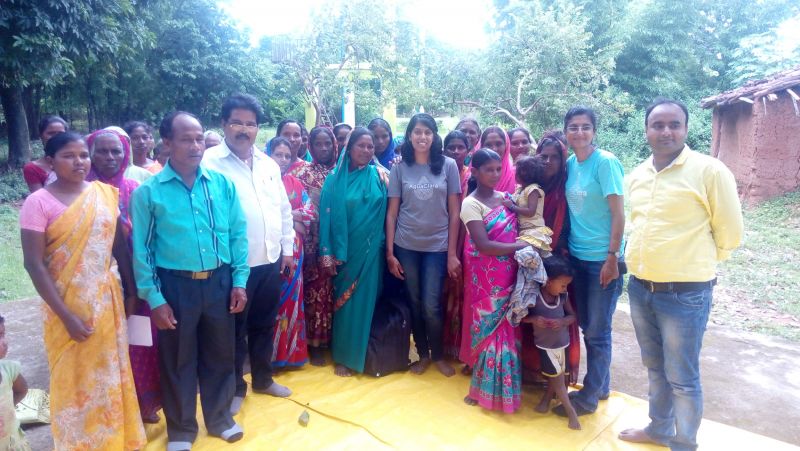In Conversation With: Maysoon Sharif from AguaClara
Published on by Water Network Research, Official research team of The Water Network in Technology
The Water Network team had the pleasure to interview Maysoon Sharif, founder of AguaClara, about her company and water purifying technologies which require no electricity but provide clean water to rural areas.
Maysoon Sharif is t he Entrepreneur and Innovator with 5 years of experience co-creating water treatment solutions for rural communities with global partners.
he Entrepreneur and Innovator with 5 years of experience co-creating water treatment solutions for rural communities with global partners.
She is the founder of AguaClara LLC, a social enterprise that designs affordable nonelectric water treatment technologies for communities around the world.
AguaClara trains local partners to deploy the technologies regionally, and they then train communities to operate and maintain the systems independently.
In 2015, AguaClara LLC was named to B-Corp's Best for the World Overall List.
Q1: It is a pleasure to talk to you Maysoon. Would you please give a brief introduction of yourself and tell us how you decided to put your efforts into helping people in rural Indian areas?
From youth, I saw the impacts of not having safe water on tap during my brief summer visits to Bangladesh to visit my family. I recognized life there was fundamentally different, vaguely discerning, through a handful of inconveniences, how they stemmed from a lack of clean drinking water on tap. As I got older, I started to realize the lack of safe water on tap was the source of a systemic inequality for the most impoverished in the country.
I started studying environmental engineering at Cornell University in 2010. I heard about the AguaClara program in Civil Engineering my junior year, which worked to design non-electric water treatment plants for communities in Honduras. This spoke to my experience in Bangladesh, and I decided to join in hopes of bringing the technologies to new countries.
I continued to participate in the program as part of my Master of Engineering and, afterwards, I founded AguaClara LLC, a certified b-corporation that provides professional on-site services to help implement the designs in communities.
The Tata Cornell Initiative heard about the work we did in Honduras and asked us to come up with drinking water treatment solutions for villages in the state of Jharkhand, India. From 2013 – 2015 I worked to pilot a new technology for four communities in the state. We now hope to grow and spread our impact within India.
Q2: Please tell us about AguaClara and what it does.
AguaClara LLC designs non-electric municipal-scale water treatment plants for underserved communities. The systems are sustainable because:
- technologies require no electricity to run, keeping operation affordable,
- systems are built using locally available materials, minimizing capital costs and making it possible for communities to carry out repairs independently,
- operation is simple and can be managed by an operator with a 6th grade education.

Over the course of several projects, we train local partners to design, implement, operate, and troubleshoot the technologies on their own. Partners then train local operators to run the systems independently. Ownership of the water treatment plant is transferred to the community, which runs the system through a small tariff paid to their own water boards.
We utilize feedback from the implementations to drive further research at Cornell University, which continually works to create wide-ranging solutions for a variety of water quality issues and social contexts.
Q3: How is AguaClara connected to Cornell University?
Cornell carries out research on cost-effective, simple, high-performing water treatment technologies that require no electricity to run. Based on that research, the Cornell lab puts out open-source designs of those technologies.
AguaClara LLC takes those open-source designs and turns them into construction-ready designs in collaboration with NGOs who will implement them in villages. Cornell then uses the knowledge gained from building those designs to drive further research.
Q4: Could you tell us a bit about your electricity-free water treatment technology and process?
AguaClara systems treat surface waters for turbidity and pathogens. They are powered by gravity, or the tendency of water to flow downhill. We use a unique chemical dose control system to deliver an accurate quantity of coagulant to the water, despite fluctuating system flow rates, without electronics, sensors, or pumps.
The coagulant makes the dirt particles in the water sticky, and then we flocculate it to cause the dirt particles to collide and stick together, forming flocks. Flocs are then delivered through a jet to the bottom of a sedimentation tank with a unique bottom geometry that causes a thick blanket of flocs to be suspended in the bottom section.
The floc blanket is very efficient at cleaning the water, so water coming out of the sedimentation tank meets World Health Organization standards for drinking water turbidity.
This water is filtered using our unique Stacked Rapid Sand (StaRS) Filters, which require 1/6 as much plan view area and 1/6 as much backwash water as a conventional Rapid Sand Filter. The filtered water is then disinfected, using the same chemical dosing system that delivers coagulant to the water.

Image: AguaClara plant in Ronhe , India
Q5: Which innovations did you implement for the Stacked Rapid Sand filter?
Normally, rapid sand filtration systems consist of 6 filter beds running side by side, where 5 beds are turned off to backwash one. We determined a way to stack six 20 cm filter beds on top of each other and divide the system flow along the vertical axis.
Therefore, you can take the combined flow through the stacked beds and redirect it to flow from the bottom of the 1.2 m stack to backwash. The backwash plumbing uses a unique siphon system, allowing us to initiate the process using a single ½” air valve.
Q6: How much water is purified daily with this technology?
Our systems can run as little as 1 liter per second (86,400 liters per day) to as much as 70 liters per second (6,048,000 liters per day).

Q7: How is this purified water further distributed?
The water treatment system is connected to a household distribution network. Each house should have at least one tap, ideally more to accommodate shower and bathroom connections.
Q8: What is your experience with training community members to handle plant operation? Do you apply the practical or theoretical teaching method and how well does this work since they are not water professionals?
There is a strong theoretical component to the operator training. The best method for training community members is to train a technician or engineer who understands the experience and perspective of operators. That person then can train operators individually and tailor the training to the local experience. The “train the trainer” method is effective for a number of different reasons.
The trainer ends up having a better idea of how to communicate theoretical concepts in understandable ways. For instance, one trainer compared the concept of creating solutions of certain concentrations to the experience the operators, who are farmers, had of mixing pesticides to spray on their crop.
Training the trainer also leaves behind higher level capacity, ensuring that if the community has a technical issue several years down the line, there is a local technician or engineer who can help them solve it.
There is also a strong practical component to the training. Operators take part in the construction of the system, fabrication of internal components, and system startup. When the system is started up for the first time, we operate the system alongside the operators, giving them more independence as they gain confidence. This whole process will last several months.

Image: Handing over the water system to the Gufu Village, Khunti, Jharkhand
Q9: Could you please explain what being a Certified B Corporation means and tell us why you decided to be open-source?
A B Corporation is a for-profit company that receives a certification for meeting rigorous standards of social and environmental performance, accountability, and transparency.
Being open-source has several benefits. It allows us to train our partners in the nuances of our system, which gives us the benefit of being able to collaborate with the people who are closest to the problem on the design features. It also allows us to train the operators in the design details through the construction, fabrication, and installation of the systems from scratch.
Q10: Are you working on any new technologies and what are the future plans for AguaClara?
The AguaClara lab is continually working on new technologies. We currently have a PF300, a prefabricated plant capable of treating high turbidity waters for a community of approximately 300 people, that is nearly ready for its first deployment. The lab continues to make leaps and bounds in characterizing the physics of conventional water treatment processes, which lays the basis of each innovation.
Currently, AguaClara technologies are serving communities in Honduras in India, but we hope to be able to help communities all over the world. We will keep pushing on the innovation front so we can increase the range of community sizes we can serve and the types of water quality problems we solve, enabling us to work in a wide variety of contexts.
Read more interviews
Media
Taxonomy
- Drinking Water Security
- Treatment
- Sand Filter
- Drinking Water Treatment
- Water Treatment & Control
- Technology
- Filters
- Clean Tech
- Technical Equipment
- Filtration Solutions
- Water Treatment Solutions
9 Comments
-
HI Miss
-
Dear my sister its excellent work. i am glad to advert and immplement this works in my country Ethiopia also please communicate me with my mail address dayabel4@gmail.com.
-
Good morning! Yes, concerned the domain the of water I am a new apprentice in this field who needs to collaborate with others to have a clear understanding and good knowledge on water which, without it no life. So, there must be for someone interests on water must look at knowledge. I'll be great if I have connection with experienced peoples like must be a good help for me. Thanks for your interest to me by your answer to my emails. I appreciate your connection with people. I'll be fitful to hear from you.
-
my friend,you are the best.we all struggling for water crises issues how clean the water for drinking .updated this century we never found drinking water real solution if we managed through filter system we produced in hand vitamin free water , i pointed out the reason & product invented for these crises solution if any wanted contact with me i will highlight the same through International Research Center as a proof authentic satisfaction
-
hi Maysoon, excellent work. we are working in irrigation system based upon storm water. will love to discuss over lapping opportunities. Regards Biplab Paul T; @BHUNGROO biplabkp@rediffmail.com. www.naireetaservices.com +919825506900
-
Outstanding! Great job!
-
very good work
-
Very good job,
-
Very good job, you have shown how enterprising you are, congratulations